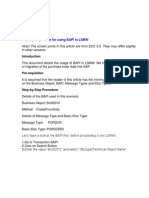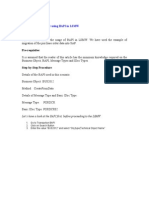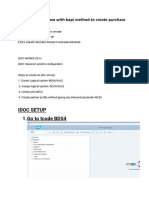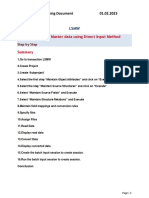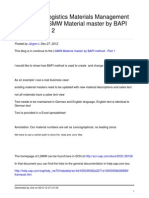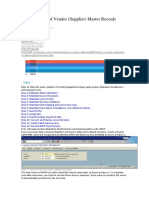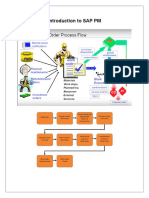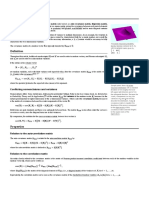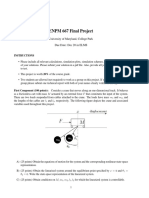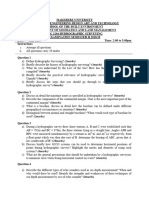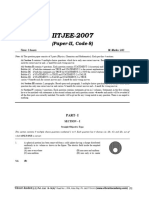0% found this document useful (0 votes)
125 views45 pagesLSMW-BAPI For PO Upload
The document discusses using LSMW to upload a purchase order via BAPI and IDOC. It describes the necessary settings and steps to maintain object attributes, source structures, structure relations, field mapping, specify files, assign files, read data, convert data, generate and process IDOCs. The process uploads purchase order data from an Excel file into SAP using IDOCs.
Uploaded by
ArunArjunCopyright
© © All Rights Reserved
We take content rights seriously. If you suspect this is your content, claim it here.
Available Formats
Download as DOCX, PDF, TXT or read online on Scribd
0% found this document useful (0 votes)
125 views45 pagesLSMW-BAPI For PO Upload
The document discusses using LSMW to upload a purchase order via BAPI and IDOC. It describes the necessary settings and steps to maintain object attributes, source structures, structure relations, field mapping, specify files, assign files, read data, convert data, generate and process IDOCs. The process uploads purchase order data from an Excel file into SAP using IDOCs.
Uploaded by
ArunArjunCopyright
© © All Rights Reserved
We take content rights seriously. If you suspect this is your content, claim it here.
Available Formats
Download as DOCX, PDF, TXT or read online on Scribd
/ 45


